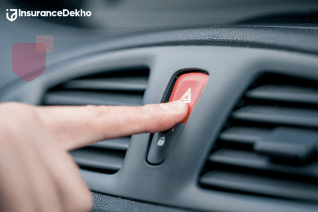All About Car Radiators
Know About Car Radiators, Its Components, Types, Working, Problems and Solutions.
If you own a car, you must understand the importance of maintaining your car in good condition. A car radiator keeps your engine cool to optimise the efficiency of your car. Though most components of your car require timely maintenance, in this article we will learn about car radiators and why they are important to run your car smoothly. A radiator is the key element of your car's cooling system. When the engine gets heated, the Radiator helps to regulate the temperature of the engine by releasing heat and taking in cool air. If the temperature of your engine is not under control, then there are strong chances of breakdown due to overheating of the engine. Further in this article, you will get to know more about the car radiators.

How Does a Car Radiator Work?
A car radiator is a type of heat exchanger that transfers heat from the engine coolant to the surrounding air and keeps the system cool. It eliminates the heat from the coolant when the coolant passes through it and circulates it back to the engine. A car radiator works in various stages:
- Circulation: Coolant is used to absorb the heat from the engine which is created during its operation. It is a mixture of water and antifreeze (coolant). The coolant thus reduces the temperature in the engine and then passes through the radiator, which expels the heat from it.
- Heat Exchange: As the coolant absorbs the heat, the hot coolant is then made to pass through the radiator’s thin, flat tubes and surrounding fins. Fins are the metal strips that help increase the surface area for better heat transfer. The amount of heat transferred depends on the difference between the temperature of the coolant and the tubes.
- Cooling: For better cooling of the fluid, a fan is used that expels the heat from the coolant which is then recirculated in the system.
- Re-channeling: Once the coolant is cooled, it is re-circulated to the engine and the process repeats. This ensures that the engine keeps operating at optimal temperatures.
Components of a Radiator and Materials Used
The main components of a radiator are mentioned below:
- Core of the radiator: This is the place where heat is exchanged. It is made up of fins and tubes that provide a better surface for heat transfer. These are usually made up of aluminum and copper due to their excellent thermal conductivity.
- Tanks: The purpose of tanks is to hold coolant. These are found on either side of the core and are generally made from metal or plastic.
- Pressure Cap: The main purpose of a pressure cap is to maintain an ideal pressure within the system. This is crucial to prevent overheating and the efficient transfer of heat. It is usually made of metal.
- Hoses and Fans: Rubber hoses connect the radiator to the engine. Fans are used to maintain the flow of air through the radiator.
- Thermostat: This is a device which is used to regulate the temperatures. Thermostat is an important part of a radiator as it helps in regulating the temperature of the engine. It is responsible for controlling the flow of the coolant when engine reaches a certain temperature.
Types of Radiators
Radiators come in a range of varieties, and it depends on the design, usage, and cooling needs of your car. Two main types of radiators are tubular type and cellular type radiators.
- Tubular Type: In this type of radiators, the upper and lower tanks are joined through a series of tubes. The coolant is then made to pass outside the tubes which are further surrounded by fins. Air passing through the tubes expels the heat from the coolant. In such type of construction, if a single tube gets clogged then it effects the overall cooling process.
- Cellular Type: Due to its cellular type of construction, these are also known as honeycomb radiators. Here the air is passed through the tubes and coolant flows in between them. In cellular type radiators, if clogging happens then it affects only a part of cooling and not entire cooling process as in case of tubular type radiators.
Common Radiator Problems and Solutions
If your car has a faulty radiator, this can disrupt its functionality. Below are some of the common radiator problems and the way these can be addressed to ensure that your engine runs smoothly.
- Leakage: It is a common problem that occurs if there is any damage caused to the hoses, pipes or the radiator gets cracked. This usually happens because of the pressure buildup in the system due to overheating of coolant. Regular inspections and replacement of faulty parts can prevent the problem of coolant leakage.
- Overheating of the Engine: This can result due to low coolant levels, a faulty thermostat, or a clogged radiator. To fix this problem, replace the faulty part, ensure regular maintenance, and check the coolant level regularly.
- Rusting of radiator: This occurs when the same coolant is used for a long time, or the radiator is exposed to certain elements. Since air, metal, and liquid, all are present together, rust is bound to occur after certain time. Regularly flush the radiator and replace the coolant to prevent the buildup of rust.
- Broken Radiator Fans: This problem can lead to insufficient cooling as the dissipation of heat will not be as required. Test the fans regularly and replace them on time if you observe that they are not working fine.
FAQs
Q: How long does a radiator work?
A: Radiators typically last between 8 to 10 years, but regular inspections for any signs of wear and tear should be done.
Q: Is it okay to drive a car with a leaking radiator?
A: It is not advisable to drive a car with a leaking radiator. This can lead to engine overheating and may cause severe damage.
Q: How much does it cost to replace a car radiator?
On average, the cost of replacing a car radiator starts from ₹3500, but it depends on your car model and the type of radiator.
Q: How can I prevent radiator problems?
A: Regular maintenance, timely coolant replacement, and inspections for any leaks or corrosion can help prevent problems.














































